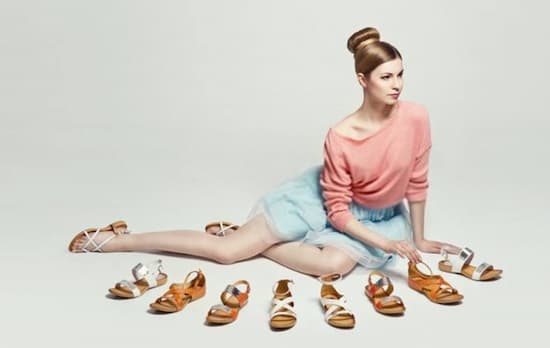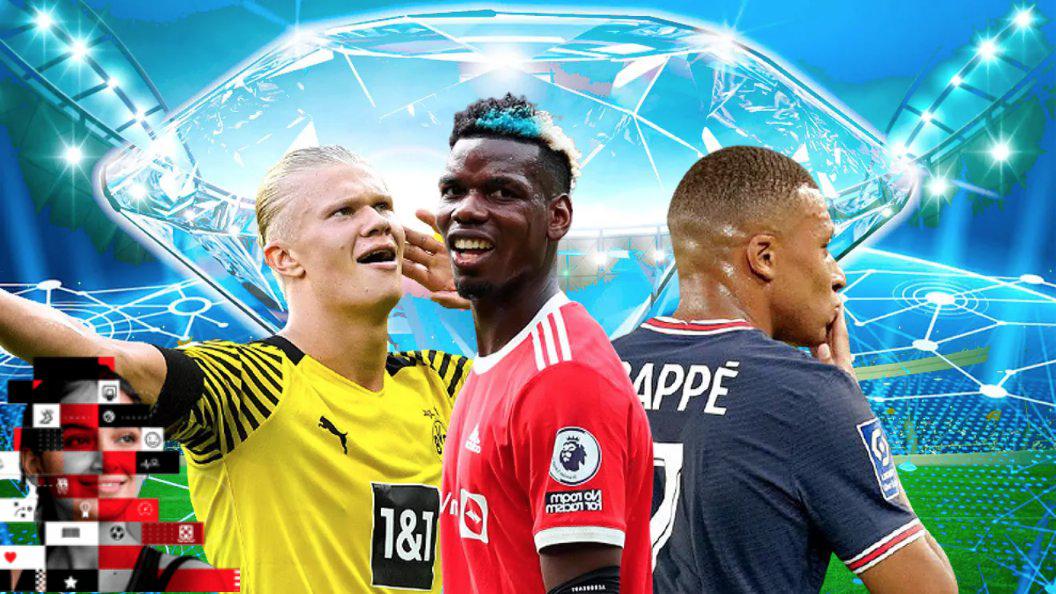Home → fancy clothes → The sustainability o...
The sustainability of the luxury sector is based on quality
- the Economist
The constant change in brands and the multitude of collections presented during a year has led customers to consume compulsively and cumulatively, causing the more than 900 million kilos of clothing that end up in the garbage in Spain every year, of which which only 10% is recycled. They are data from the Iberian Association of Textile Recycling (Asirtex). In this regard, the luxury industry is a bastion in the fight against buy-use-throw away, since the quality of its items means that they live with the buyer for a long period of time, thus favoring sustainability in the industry.
This was one of the conclusions of the Sustainable Luxury Observatory: Sustainable and digital trend, current protagonist of the luxury market, prepared by elEconomista in collaboration with Klarna. " For many customers it is very difficult to know how sustainable a garment or product they buy is . At Klarna we have developed a tool for the user to check the footprint that purchase is leaving on the planet," said Daniel Espejo, country manager of Klarna in Spain. In this way, the customer can be pushed towards more sustainable brands.
For her part, Dora Casal, CEO of Roberto Verino, indicated that " sustainable purchasing is conscientious purchasing . Everybody feels bad when they have to empty a part of their wardrobe. That is why we are becoming more and more aware when we go to buy a garment if it is essential in life and the uses that are going to be given to it. Here, the brands have to offer added value in terms of quality and durability".
In this regard, according to a study by Bain & Company and Depop, for Generation Z (those born between 1995 and 2015), sustainability is the factor that most influences purchase decisions. A large percentage of consumers indicate that the commitment of brands to social and environmental sustainability influences their purchase decisions : 70% mention fair wages and employee safety, 60% diversity and inclusion in teams , another 60% claimed to take into account the reduction of the brand's polluting footprint, 50% social activism and 45% the use of ecological materials. In this way, 90% of the participants in the survey claimed to have implemented changes in their day-to-day to be more sustainable. Specifically with regard to fashion consumption, 70% are reducing their purchases, 60% are repairing their own clothes and 45% are buying second-hand clothes.
"We are focused on the concept of second life and on minimizing the destruction of products. The circular economy is part of the concerns of consumers and brands . Another initiative that is gaining momentum is eco-design: producing sustainably ", pointed out Juan Pedro Abeniacar Trolez, CEO of LVMH Iberia.
Among the reasons that lead users to buy second-hand items, the reduction in consumption and greater sustainability (75%) , lower prices (65%) and the acquisition of unique items (55%) stand out. The used luxury goods market encompasses not only younger consumers who shop primarily for aspirational categories and products, but also higher spenders and collectors looking for high-end or collectible items. Brands are increasingly tapping into this market and becoming platforms to engage with customers throughout the lifecycle of an item or product.
For his part, Daniel Vancells, general director of Castañer, explained that "sustainability must be understood in all dimensions: economic, the company has to earn money to be able to remain; social, for example, promoting employment in the country (all our value chain is national); and environmental. Of course, there is also part of the sustainability that has to come from the consumer : acquiring quality products will favor greater durability".

Beyond the fact that the luxury industry has an aspirational component, the truth is that it is more sustainable than other markets. It is worth stopping to think that when buying jeans for 10 euros, there is some point in the production chain that is not sustainable . As Juan Pedro Abeniacar Trolez highlighted, sustainability also concerns suppliers. "The fact that some element of your value chain is outsourced does not exempt you from your responsibility." Thus, in order to be an LVMH distributor, a series of parameters must be met.
"We have been working with a few suppliers for many years and they all have to meet a series of quality and social balance standards that are in line with the brand's values," explained Dora Casal, who added that " we make garments that last in the wardrobe and have an emotional component for the customer . That is the essential value of luxury. They are not items that are changed every year".
In his case, Daniel Espejo pointed out that "luxury is becoming democratized. Increasingly, consumers want garments that last over time , thus avoiding having to generate waste. For this reason, both Generation Z and millennials, older generations committed to sustainability, will greatly boost the luxury industry."
As for 2021, according to Bain & Company, the luxury market is expected to reach between €250 billion and €295 billion driven by the appetite of China and its citizens; luxury customers of all nationalities are growing or on the way to recovery; or in the growth of the online channel, which remains strong, as new customers buy luxury goods in this way for the first time and the price range is widened, with more basic products but also more high-end items.
my heart aches for the king family, rest easy Alex! You always knew how to make everyone smile ❤️
— Carlee ⋆ Mon Jun 07 22:20:43 +0000 2021
online acceleration
As in many other sectors, luxury has advanced in terms of digitization by leaps and bounds as a result of the pandemic caused by Covid-19. In fact, as Juan Pedro Abeniacar Trolez pointed out, "in Spain, in 2019 online sales represented 4% in the perfumery and cosmetics sector. During 2020 it has come to represent 17% and we think it will stabilize around 14%. However, the projection in Asian countries, especially China, is that in 2025, 50% of sales will be online ."
Of course, the CEO of LVMH Iberia also wanted to highlight how digitization has not only been worked on for the customer, but also internally. "We have programs with which we intend to automate everything that is possible so that the person is in a position to provide all their talent with added value."
For Daniel Vancells, "the symbiosis of all channels is very important. Logically, the weight of the digital channel is going to increase, but we need that proximity with the customer for our handmade product , with a very Mediterranean essence. At the points of sale, the customer enjoys the sensation of buying. In the end, we must understand that they have different moments to choose one channel and another. We must understand this pattern of consumption and how it works".
In this sense, according to the Bain & Company study, the human touch continues to be important. The consultancy estimates that more than 85% of luxury purchases will be generated, albeit indirectly, by digital channels in 2021 . But the human touch in the luxury sector is still necessary, and whether in-store or remotely, these interactions will play a critical role in maintaining customer loyalty.
"Time is a luxury item," said Dora Casal, who explained that Roberto Verino has been able to transfer the personalized experience that customers experience in physical stores to the online channel, achieving this unified commerce. For this, " the segmented information that digital offers you is fundamental , since you can do a more exact and more ad hoc job, which offers a competitive advantage".
Along these lines, "e-commerce offers possibilities that are very different from those of physical retail. The most interesting, especially in the luxury sector, is personalization . We have 90 million users in the world and we process some two million transactions per day, which allows us to observe how the different segments of the population buy. An objective for luxury brands is to reach the youngest population", stressed Daniel Espejo.
The challenge of counterfeiting
The massive arrival of the Internet in homes has brought with it another consequence: the growth of the counterfeit market. A large part of the platforms specialized in electronic commerce has become a great drain for the sale of products that imitate the big brands, even copying the name. Although there are no exact figures, the luxury sector considers that the losses could be in the millions and has therefore called on the European Commission to oblige online platforms to adopt all necessary measures to detect and prevent the sale of counterfeit products on the Internet. as well as its subsequent reappearance.
"I would like the fight against counterfeiting to be toughened. The online environment is complex, but if there are web pages or platforms that are identified and offer plagiarized articles, the goal should be to close them ," said Daniel Espejo, who added that it would be interesting add a traceability element, following the path that the product has followed until it has reached a platform for subsequent sale.
6.8% of all European imports from third countries are counterfeit and pirated products, with a value of 121,000 million, according to OECD figures. In addition, online counterfeits pose a growing risk to the safety and well-being of consumers , as they become increasingly vulnerable to online scams. "If we are able to identify where a product comes from and where it ends up once it has been bought, we will be able to avoid that market that is sold as second-hand and it is not. It is important that there is more forceful legislation", stressed Dora Casal .
For his part, Juan Pedro Abeniacar Trolez pointed out the damage that this type of counterfeiting does to the brand. In his case, due to the size of the company, "we have a department specialized in tracing and trying to attack, with the legal instruments available, all websites and physical sites." For example, Louis Vuitton already has a traceability chain thanks to blockchain technology and the goal is to extend it to the rest of the group's brands. The CEO of LVMH Iberia stressed that not all items are counterfeit, but that some "are also stolen and their destination is this type of site."
The Association for the Defense of the Brand points out, like the Fortuny Circle, that it is essential that intermediaries -such as the large electronic commerce platforms- act proactively to prevent counterfeits from being sold in their digital establishments and that consumers receive accurate and truthful information on the products they purchase .
"There is something that cannot be copied from us, quality," said Daniel Vancells, who also questioned the responsibility of the consumer himself: "There has to be legislation and the platforms themselves should help us fight against this fraud, but the consumer also has to be responsible ." At the end of the day, the fight against fraud, like the achievement of sustainability, does not only concern companies, it is a commitment that the whole of society must acquire.
comments0WhatsAppFacebookTwitterLinkedin






